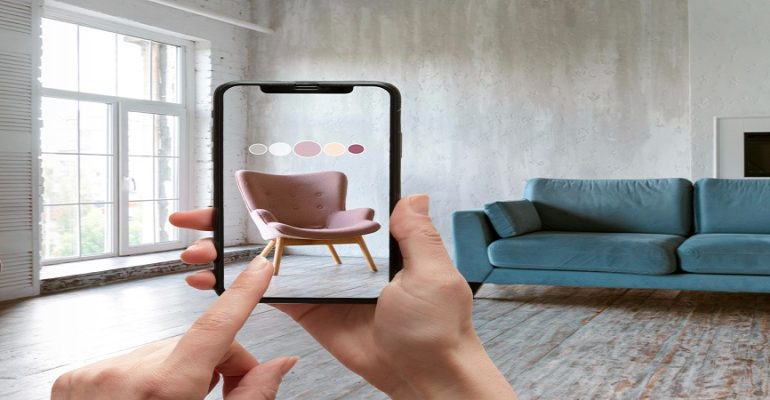
Top 7 Augmented Reality Frameworks for an App Development

Top 7 Augmented Reality Frameworks for an App Development
Businesses from a variety of industries are using augmented reality (AR) frameworks more frequently to improve their operations and interact with customers in more innovative ways. AR frameworks offer exciting possibilities for app developers to create immersive and interactive experiences. Developers frequently rely on specialized frameworks designed for AR development to fully utilize the potential of AR and create specialized apps.
What is an AR framework?
It is a combination of software tools, libraries, and components that developers use to create AR applications and experiences. These frameworks offer the tools and resources they need to create AR applications more quickly. Augmented reality combines digital information or virtual objects with the real-world environment seen through a device’s camera, such as a smartphone or AR glasses.
Top 7 Augmented Reality Frameworks
A programming language serves as the foundation for frameworks, providing pre-written interfaces, tools, and components for building software applications. Here are some of the top augmented reality frameworks to build an AR-based application.
1. ARCore
It is an augmented reality framework for Android that uses APIs to make sense of surroundings. Most Android devices are compatible with ARCore, and Google has listed them all.
ARCore combines the virtual and physical worlds by utilizing the three crucial components of a smartphone camera which includes motion-tracking, environmental understanding, and light estimation.
ARCore works by fusing two concepts, one it tracks where your mobile device and the second it constructs its view from the outside world. It uses features that describe the intriguing details that a phone’s camera records.
Then it tracks the progression of the intriguing point. By fusing the two data with the phone’s internal sensor ARCore can sense the position and orientation of the phone in space.
2. ARKit
It was developed by Apple to provide iOS customers with an unmatched AR experience. It allows the app developers to simply create AR experiences using the camera, processors, and motion sensors of iOS devices. The iOS devices can sense how it moves in a space with Visual Inertial Odometry technology. This evaluates the layout of the environment and finds horizontal planes like tables and floors. This evaluates the environmental layout and finds horizontal planes like tables and floors.
ARKit can track the user’s face by building a face mesh. This feature is completely responsible for adding effects to the user’s face in real-time.
3. Vuforia
It is one of the most popular AR frameworks for app development. It provides AR features for use in smartphones, tablets, and eyewear. It is the right option for developers who are looking for native platforms like iOS, Android, and UWP (Universal Windows Platform).
Vuforia uses tracking to create the best AR experiences. After understanding its surrounding world through tracking objects, spaces, and images, it overlays AR elements on it.
4. Unreal Engine
It is one of the most powerful AR frameworks that can deliver integrated experiences for both iOS and Android platforms. It is known for its exceptional capacity to produce immersive AR experiences. Epic Games is the owner of Unreal Engine, and they have a huge impact in the field of creating AR apps.
Unreal Engine is cost-effective and provides high efficiency for developers. They start charging you once you start making sizable money. When an app makes $1 million, the charge is of 5%.
5. Kudan
It is an AR framework known for its powerful tracking abilities and flexible features. Both marker-based and marker-less tracking are available. Kudan comes with SLAM (Simultaneous Localization and Mapping) technology, making it possible to position virtual objects precisely in the physical world.
This framework is perfect for applications in education, training, and gaming but it might lack some cutting-edge features found in other frameworks.
6. Unity 3D
It is developed by Unity and serves as the platform for building rich AR experiences that can be used on mobile devices as well as wearables. Unity 3D provides all the components to help you in AR app development.
Unity3D is primarily renowned for creating immersive computer graphics and games, but we can also include amazing CGI in apps. Most AR frameworks include Unity3D-specific tools and extensions.
7. ARToolKit
It is the AR tracking library maintained by Chinese AR startup Realmax Inc. It allows users to design and position well-built AR objects. It is a simple framework for building cross-platform real-time AR applications. It has a real-time planar detecting system that uses 6D marker tracking technology that is quick and affordable.
ARToolKit has a larger user base and delivers a new level of use, refinement, and quality with a familiar and accessible approach.
Conclusion
AR frameworks have become crucial tools for developers aiming to make engaging and interactive AR applications. The choice of the right framework can significantly impact the development process, the quality of the AR experience, and the compatibility with target platforms.
Choosing the right AR framework depends on factors including the target platform, the complexity of an AR project, the need for cross-platform compatibility, and development expertise. To create engaging apps that satisfy the demands of consumers and businesses, it is important to keep up with the recent developments and trends.